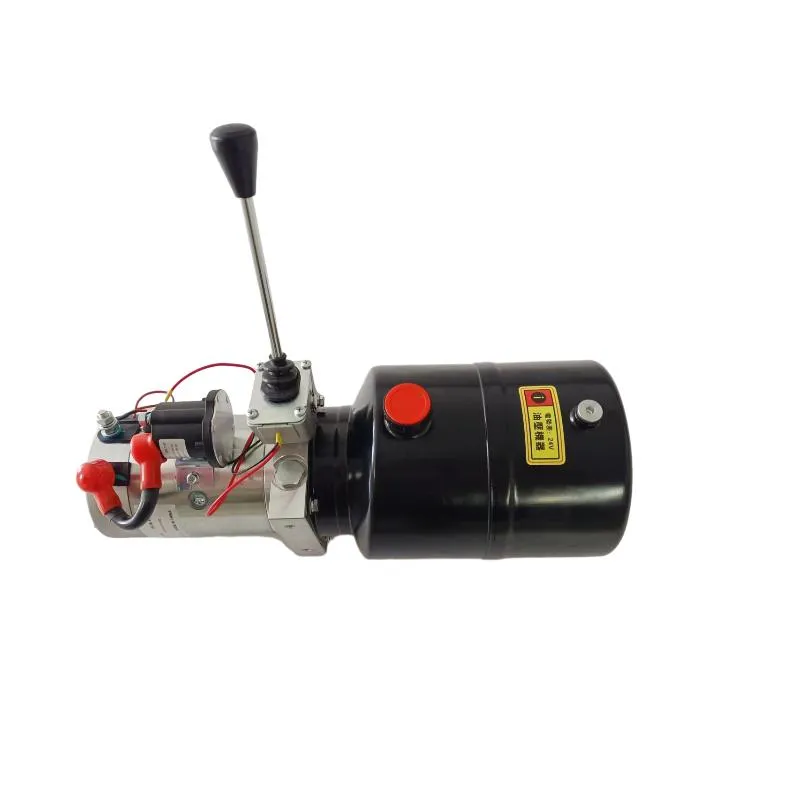Oct . 18, 2024 01:04 Back to list
Hydraulic Cylinder Manufacturing Solutions for Industrial Applications and Efficiency Enhancement
The Evolution of Cylinder Hydraulic Technology The Heart of Modern Manufacturing
In the realm of manufacturing and engineering, hydraulic systems play a pivotal role, particularly in the operation of machinery and equipment. Among the myriad components of hydraulic systems, hydraulic cylinders stand out for their critical function in converting hydraulic energy into mechanical force. The cylinder hydraulic factory, as the birthplace of these indispensable components, embodies the innovation, precision, and engineering excellence that drive countless industries forward.
Understanding Hydraulic Cylinders
A hydraulic cylinder is a mechanical actuator that uses pressurized hydraulic fluid to produce linear motion and force. The basic design consists of a cylindrical barrel, a piston, and a rod. When hydraulic fluid is pumped into the cylinder, it pushes the piston, consequently extending or retracting the rod. This simple yet effective mechanism is fundamental to a wide range of applications, from construction equipment like excavators and cranes to manufacturing machinery, recreation vehicles, and even aerospace technologies.
The Role of Cylinder Hydraulic Factories
Cylinder hydraulic factories specialize in the design, manufacturing, and assembly of hydraulic cylinders. These factories are equipped with advanced machinery, precision tools, and skilled engineers who work together to produce high-quality hydraulic components. The production process typically involves several key stages design and engineering, material selection, machining, assembly, and testing.
1. Design and Engineering The manufacturing process begins with the development of specifications based on customer requirements. Engineers use computer-aided design (CAD) software to create detailed schematics, ensuring that the final product meets the necessary performance, safety, and durability standards.
2. Material Selection Hydraulic cylinders must be made from materials that can withstand high pressures and corrosive environments. Common materials include carbon steel, stainless steel, and various alloys. The choice of material significantly impacts the longevity and efficiency of the hydraulic cylinder.
3. Machining Once the design is finalized and materials selected, the next step is machining. This involves cutting, grinding, and drilling to create precise cylinder components. Factories utilize advanced CNC (Computer Numerical Control) machines that provide exceptional accuracy and efficiency, reducing the likelihood of defects.
cylinder hydraulic factory

4. Assembly After machining, components are meticulously assembled. This step requires skilled technicians who ensure that seals, rods, and pistons are fitted correctly to prevent leaks and ensure optimal performance. Quality control measures are integral at this stage to maintain high manufacturing standards.
5. Testing Before hydraulic cylinders are delivered to clients, they undergo rigorous testing procedures. This includes pressure tests, performance evaluations, and inspections to guarantee that each cylinder operates reliably and safely under various conditions.
The Impact of Technology on Cylinder Manufacturing
The advent of advanced technology has revolutionized the manufacturing process of hydraulic cylinders. Automation and robotics streamline production, increase speed, and enhance consistency. Additionally, innovations in materials and design software contribute to lighter, stronger, and more efficient hydraulic cylinders. These advancements not only improve product performance but also reduce costs and environmental impact, aligning manufacturing processes with sustainability goals.
The Future of Cylinder Hydraulic Factories
As industries continue to evolve, so too will the cylinder hydraulic factories that support them. The demand for more efficient, durable, and eco-friendly hydraulic solutions is growing. Factories must adapt by embracing Industry 4.0 trends, including the Internet of Things (IoT) and smart manufacturing systems that offer real-time monitoring and data analytics.
Moreover, as the focus on renewable energy and electric vehicles increases, hydraulic systems may need to evolve in response to new operational requirements. Cylinder hydraulic factories will play a crucial role in developing innovative solutions that address these challenges and enhance system efficiency.
Conclusion
In conclusion, cylinder hydraulic factories represent a crucial link in the manufacturing chain, producing essential components that drive a wide array of machinery and applications. Their commitment to innovation, quality, and precision has empowered engineers and manufacturers to create more powerful and efficient systems. As technology continues to advance, these factories will remain at the forefront, shaping the future of hydraulic engineering and contributing to the ongoing development of modern industry.
-
Fork Lift Power Units - Hebei Shenghan | Efficiency, Reliability
NewsJul.13,2025
-
1.5-Ton Turbocharged Cylinder-Hebei Shenghan|Hydraulic Solution,Energy Efficiency
NewsJul.13,2025
-
Auto Hoist Power Units-Hebei Shenghan|Efficiency&Industrial Lifting
NewsJul.13,2025
-
Double Acting Power Units-Hebei Shenghan|Hydraulic Solutions,Industrial Efficiency
NewsJul.13,2025
-
1.5 Ton Lifting Cylinder 70/82-40-290-535 - High-Performance Hydraulic Solution | Hebei Shenghan
NewsJul.13,2025
-
Fork Lift Power Units - Hebei Shenghan | Efficiency&Reliability
NewsJul.13,2025
